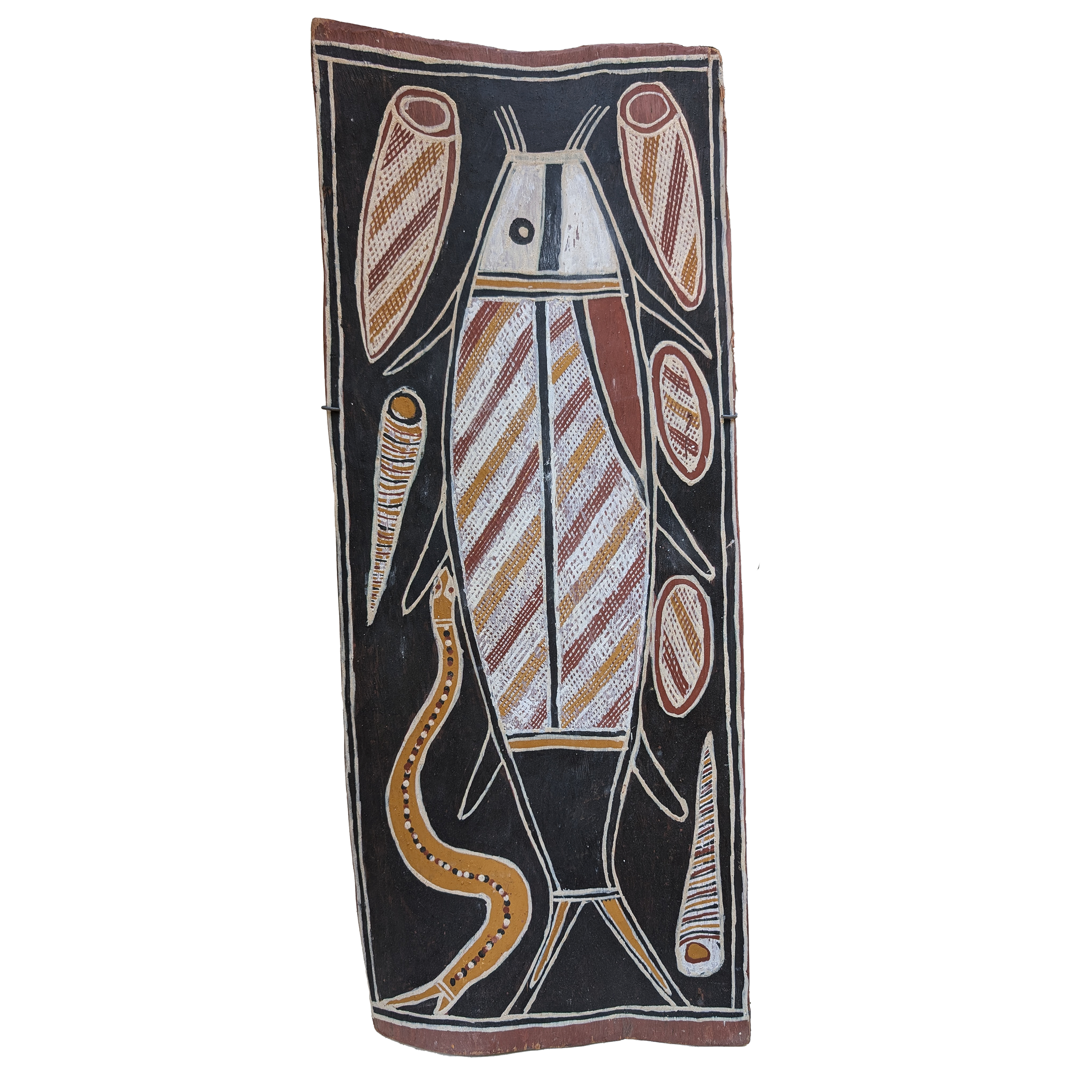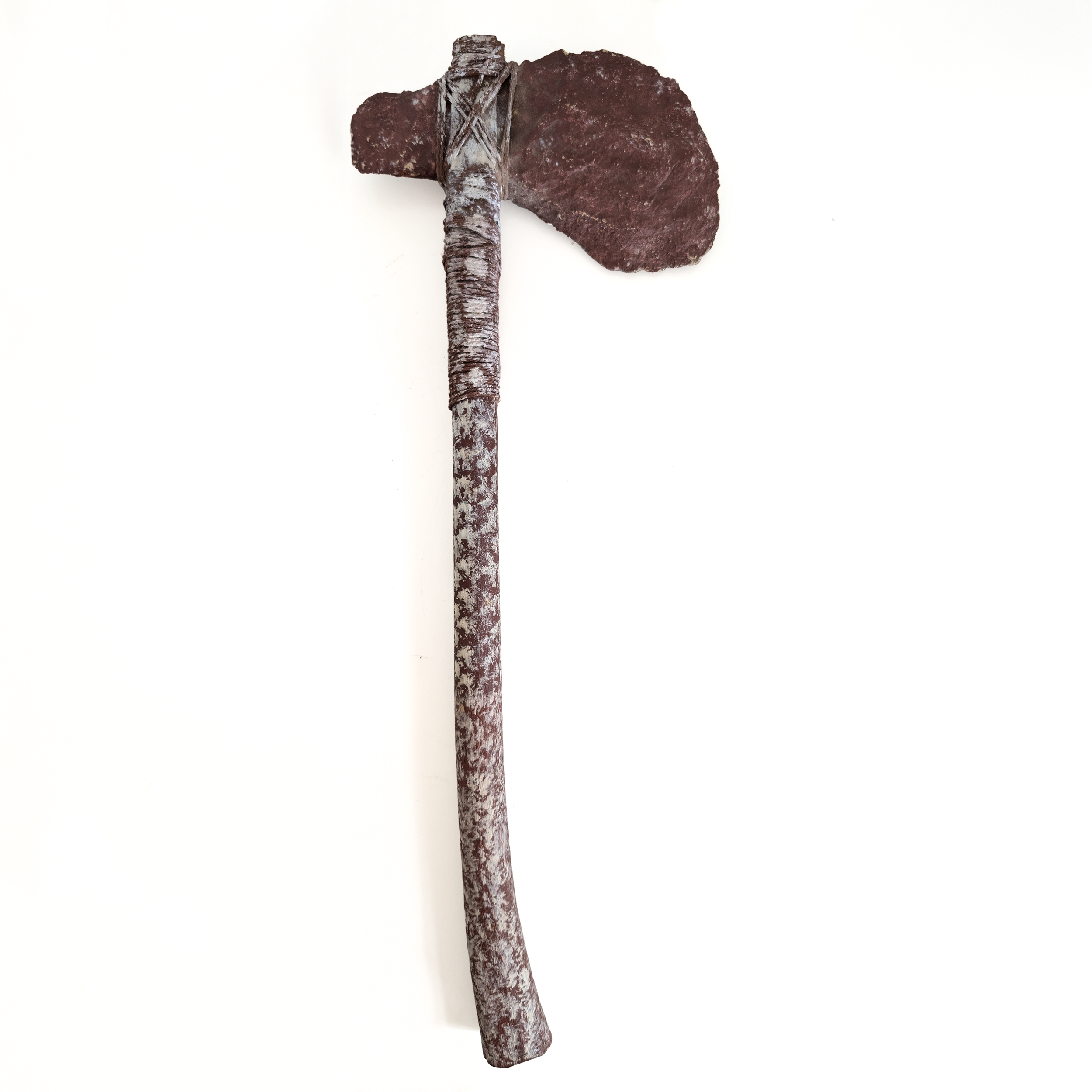
Artist: Dr David Daymirringu Malangi | Title: Catfish | Year: c.1978 | Medium: natural earth pigments on bark | Dimensions: 59 x 23cm
PROVENANCE
Bula Bula Arts, Ramingining NT Cat No. N130
Cooee Art Gallery, Sydney NSW
EXHIBITED
Bark Paintings 1930-2000, July 2011, Coo-ee Art Gallery
AIAM100 Exhibition Launch , August 2010, Coo-ee Art Gallery
ARTWORK STORY
David Malangi, who began painting in the early 1960s, played a vital role in the development of the contemporary Aboriginal art movement and became, during his lifetime, one of the great inspirational figures of Arnhem Land art. While, for many older Australians, he is best known for the image that featured on the now defunct one-dollar note, he was also a travelling ambassador for his country and his people and achieved world wide recognition for his innovative yet deeply tradition-based bark paintings.
Artist Profile
COMMUNITY/REGION
Arnhem Land, NT
LANGUAGE
Yolŋu (Manharrngu clan)
BIOGRAPHY
David Malangi, who began painting in the early 1960’s, played a vital role in the development of the contemporary Aboriginal art movement and became, during his lifetime, one of the great inspirational figures of Arnhem Land art. While, for many older Australians, he is best known for the image that featured on the now defunct one-dollar note, he was also a traveling ambassador for his country and his people and achieved worldwide recognition for his innovative yet deeply tradition-based bark paintings… Continue Reading
PROVENANCE
Bula Bula Arts, Ramingining NT Cat No. N130
Cooee Art Gallery, Sydney NSW
EXHIBITED
Bark Paintings 1930-2000, July 2011, Coo-ee Art Gallery
AIAM100 Exhibition Launch , August 2010, Coo-ee Art Gallery
ARTWORK STORY
David Malangi, who began painting in the early 1960s, played a vital role in the development of the contemporary Aboriginal art movement and became, during his lifetime, one of the great inspirational figures of Arnhem Land art. While, for many older Australians, he is best known for the image that featured on the now defunct one-dollar note, he was also a travelling ambassador for his country and his people and achieved world wide recognition for his innovative yet deeply tradition-based bark paintings.
Artist Profile
COMMUNITY/REGION
Arnhem Land, NT
LANGUAGE
Yolŋu (Manharrngu clan)
BIOGRAPHY
David Malangi, who began painting in the early 1960’s, played a vital role in the development of the contemporary Aboriginal art movement and became, during his lifetime, one of the great inspirational figures of Arnhem Land art. While, for many older Australians, he is best known for the image that featured on the now defunct one-dollar note, he was also a traveling ambassador for his country and his people and achieved worldwide recognition for his innovative yet deeply tradition-based bark paintings… Continue Reading







